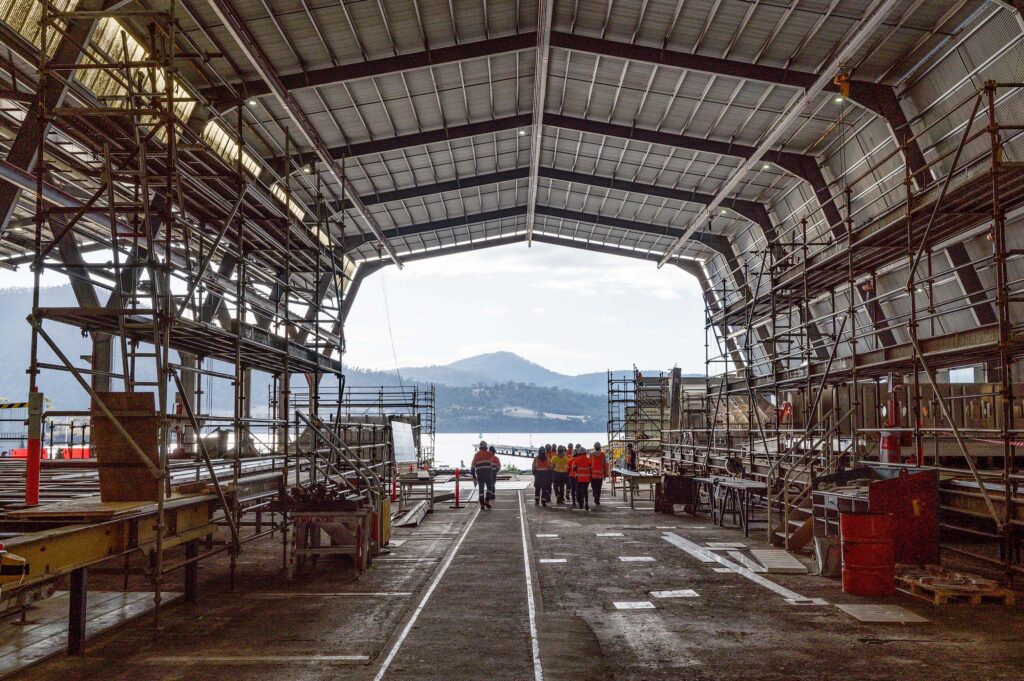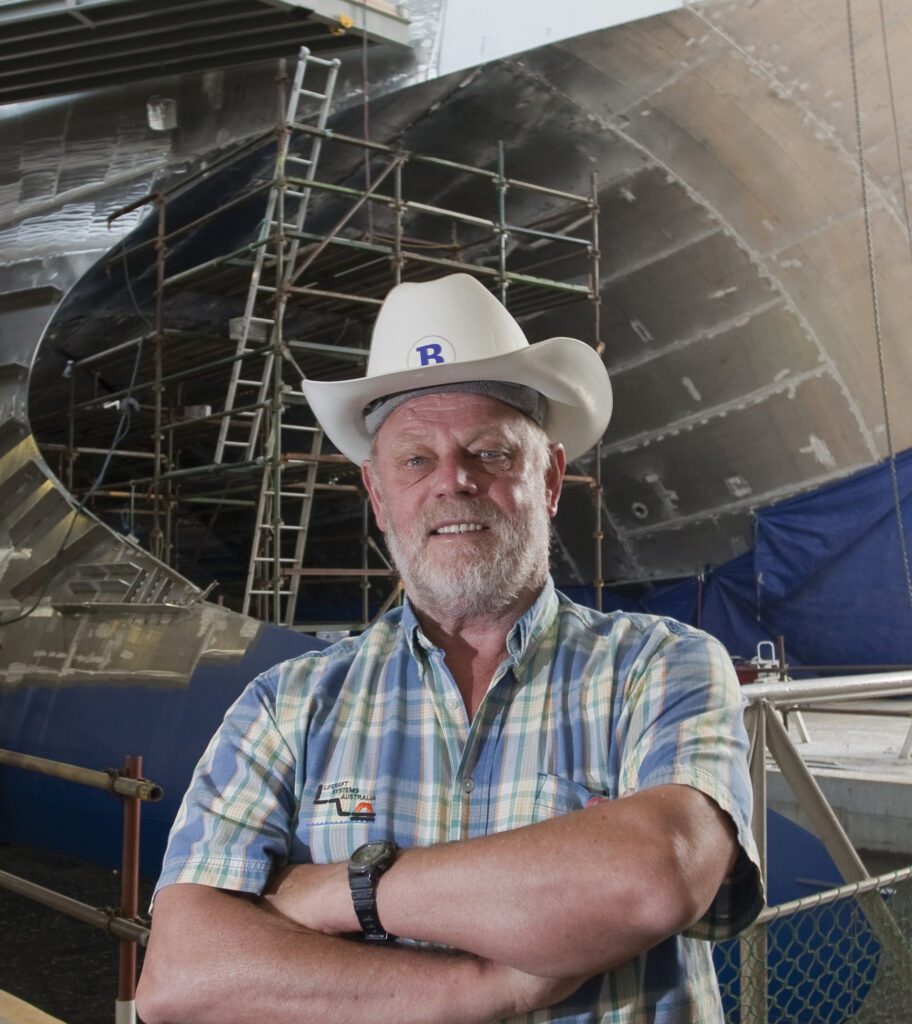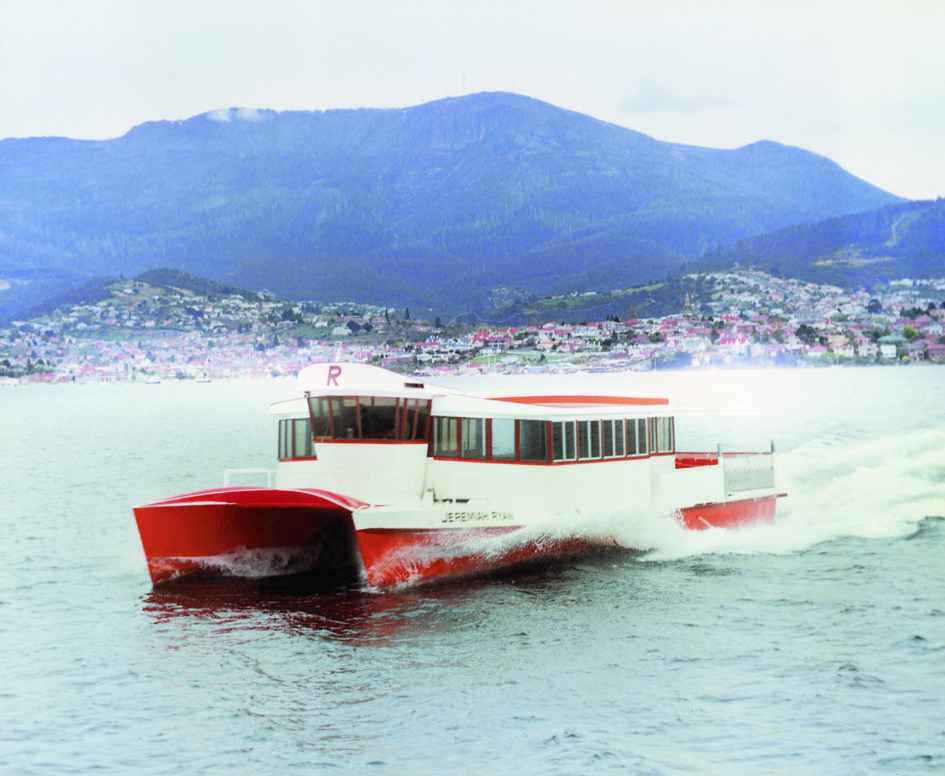From humble beginnings, Incat is now proud to be leading the world in the transition to sustainable passenger and vehicle ferries
In 1990, we delivered our first aluminium catamaran capable of carrying vehicles. This revolutionised the industry and shipbuilders around the world followed in our footsteps.
Incat has always been an innovator and we are once again leading the industry by constructing the largest battery electric ferry in the world.
We are based in Tasmania where we can generate 100% of our energy needs from renewables and have already reached net-zero for the past 7 years.

Our shipyard incorporates more than 70,000m2 of undercover production halls, with two dry-dock areas capable of accommodating up to six vessels under construction. We will continue to be relentless in our pursuit of innovation and have a proven track record of delivering world-class vessels. Sitting at the cutting edge of environmentally friendly craft, Incat sets the global benchmark in aluminium ship technology and provides optimal lightweight ship solutions for ferry operators around the world.

A Message From
The Chairman
Since the September 1977 launch of our first high-speed catamaran at Prince of Wales Bay in Tasmania, 200 metres from our present site. The journey forward takes us through to today’s generation of large wave piercing catamarans, including the world’s largest battery electric ferry which is under construction at our shipyard.
Early challenges, with the introduction to service of prototype craft, were met and improvements were made on production vessels. Our aim is to continue to improve the product, and this is evident in our dedicated designers and tradespeople, ensuring that each ship delivered is significantly better than the last.
With four building halls, extensive wharf facilities, a slipway and two dry-dock areas, Incat boasts innovative production facilities to construct, launch and deliver small craft through to larger ships of 150 metres in length and of panamax beam.
Incat vessels are proven in regular service, we have achieved an excellent reputation for safety, speed, reliability, efficiency, and ride.
These factors, and importantly passenger comfort, are paramount to us in designing and constructing the world’s best aluminium ferries.
Applications are diverse; whether commuter ferries, large passenger and freight ships, military and coastguard craft, or work boats for the offshore industry. Whether it’s for calm waters or heavy seas, the Incat product offers optimum transport solutions.
Changes in the shipping world’s environmental regulations is a positive for Incat and the industry. Our design and engineering team have long been focused on maximising efficiency and fuel economy and will continue to lead the way in the transition from diesel to battery electric.

Robert Clifford
Chairman

Incat History
The Incat group evolved from other boat building companies, including the Sullivans Cove Ferry Company (SCFC) formed by Robert Clifford in 1972. SCFC built conventional steel mono-hull vessels, and operated small ferries across Hobart’s Derwent River.
SCFC gained prominence transporting more than 9 million passengers in the two years following the 1975 Tasman Bridge collapse, the sole bridge link between the eastern and western shores of Hobart.
After the bridge re-opened, International Catamarans Pty Ltd specialised in the construction of fast ferries. After extensive research the company commenced specialisation in aluminium construction.
The Incat group of companies is privately owned, with shares held by the founder and chairman of the board Robert Clifford, the Clifford family, company directors and employees.